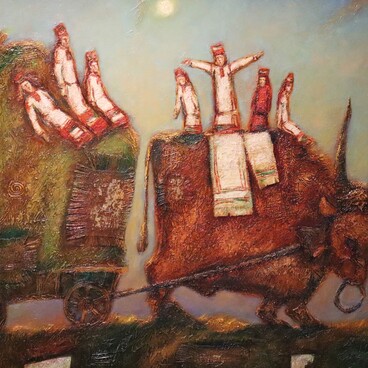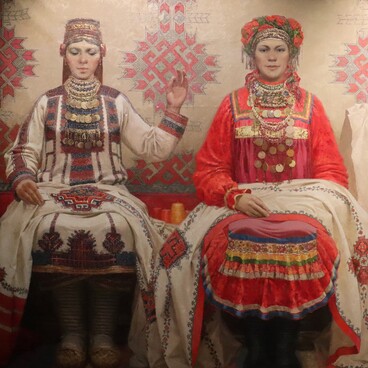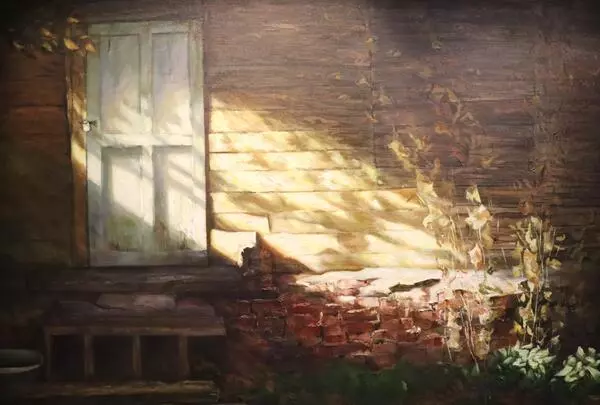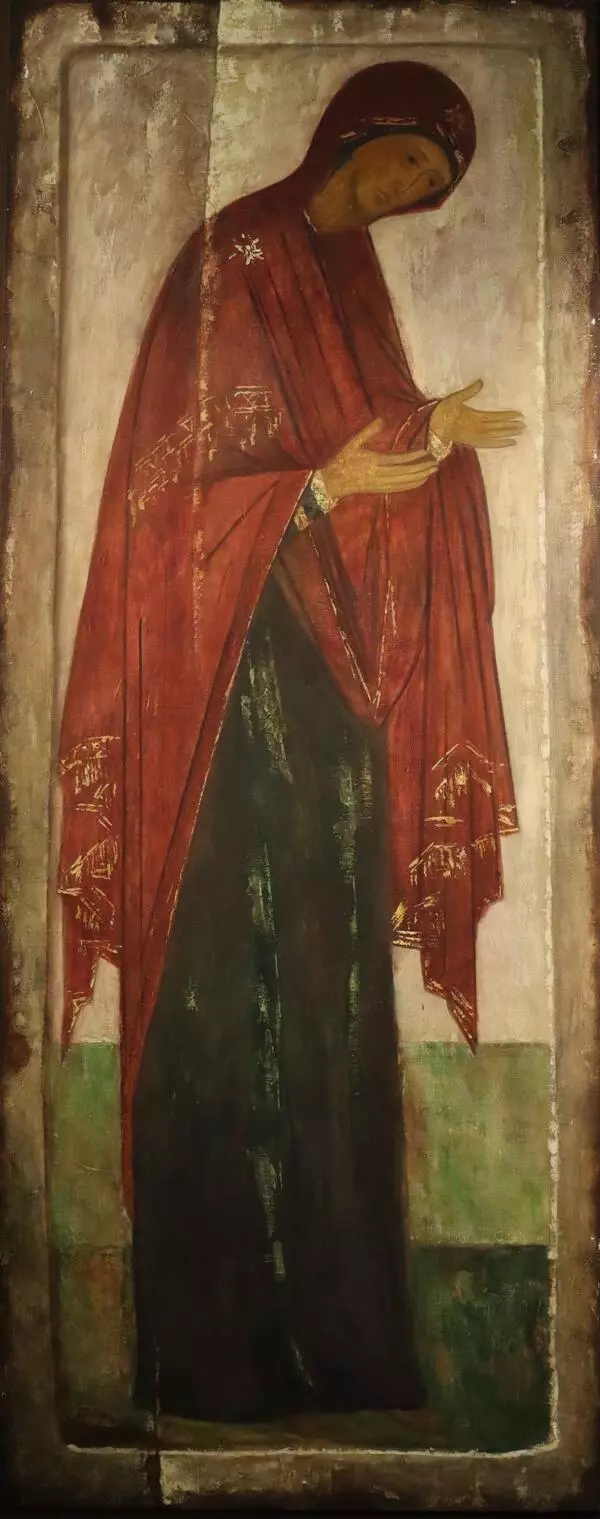Stepan Korotkov, a restorer, painter, and People’s Artist of the Republic of Mordovia, often combines iconographic symbols and expressive features of secular painting in his canvases. Light in the works of Stepan Korotkov is the main character and at the same time the main means of artistic expression. Light has a deep symbolic meaning: it represents life, faith, and goodness. It is not surprising that the artist often turns to biblical images, for example, the Mother of God, John the Baptist, Archangel Michael and George the Victorious, who convey a metaphor of spiritual enlightenment. The artist’s solo exhibition, which took place in the Mordovian Museum of Visual Arts named after Stepan Dmitrievich Erzia, was called “The Light Image”.
In 2006, the artist created the triptych “In Memory of Andrei Rublev”. The source of inspiration for the central part of the triptych was Andrei Rublev’s icon “Christ in Majesty” which was created in 1408. This iconographic type reflects the Second Coming of the Lord in all His glory and majesty, when the Lord will appear to judge the living and the dead.
The artist follows the canon and uses biblical symbolism in the image of Christ. The red square with concave sides represents the earth. The blue-green oval inscribed in it symbolizes the spiritual world, and the red rhombus is used to denote the hosts of heaven. With his right hand, Christ blesses people, in his left he holds the Book of Life with the names of the saved people.
Traditionally, the symbols of the four evangelists are depicted at the ends of the red square. The symbol of the evangelist Matthew is an angel, which represents Christ’s human nature. The lion, the symbol of Mark, signifies the authority of the Son of God; the ox, the symbol of Luke, represents the sacrifice of the Savior; finally, the eagle, the symbol of John the Apostle, denotes the spiritual outlook.
Stepan Korotkov did not paint the symbols in detail, as his main task is not to copy the icon, but to create a picturesque image of Jesus saving the world. The artist also uses a signature element — he adds the image of sunlight falling through the window. Thus, Stepan Korotkov creates the concept of spiritual light that opposes darkness.
In 2006, the artist created the triptych “In Memory of Andrei Rublev”. The source of inspiration for the central part of the triptych was Andrei Rublev’s icon “Christ in Majesty” which was created in 1408. This iconographic type reflects the Second Coming of the Lord in all His glory and majesty, when the Lord will appear to judge the living and the dead.
The artist follows the canon and uses biblical symbolism in the image of Christ. The red square with concave sides represents the earth. The blue-green oval inscribed in it symbolizes the spiritual world, and the red rhombus is used to denote the hosts of heaven. With his right hand, Christ blesses people, in his left he holds the Book of Life with the names of the saved people.
Traditionally, the symbols of the four evangelists are depicted at the ends of the red square. The symbol of the evangelist Matthew is an angel, which represents Christ’s human nature. The lion, the symbol of Mark, signifies the authority of the Son of God; the ox, the symbol of Luke, represents the sacrifice of the Savior; finally, the eagle, the symbol of John the Apostle, denotes the spiritual outlook.
Stepan Korotkov did not paint the symbols in detail, as his main task is not to copy the icon, but to create a picturesque image of Jesus saving the world. The artist also uses a signature element — he adds the image of sunlight falling through the window. Thus, Stepan Korotkov creates the concept of spiritual light that opposes darkness.






